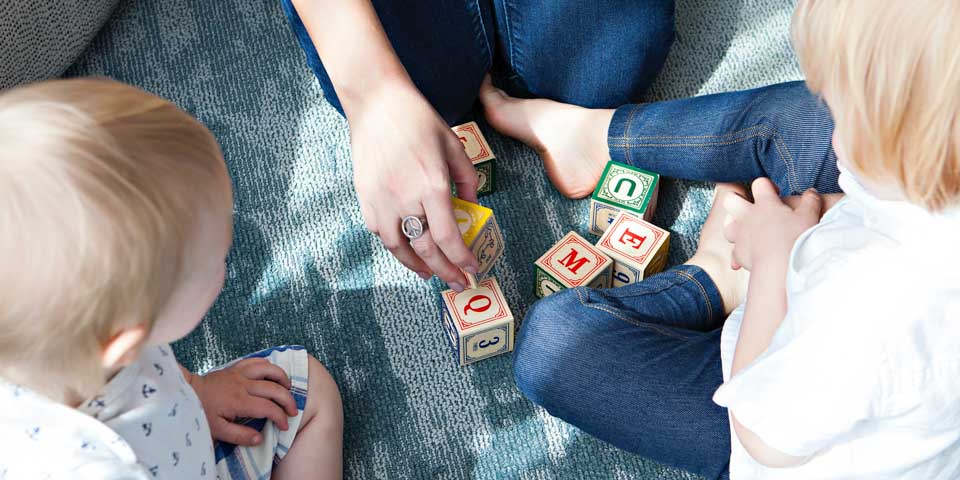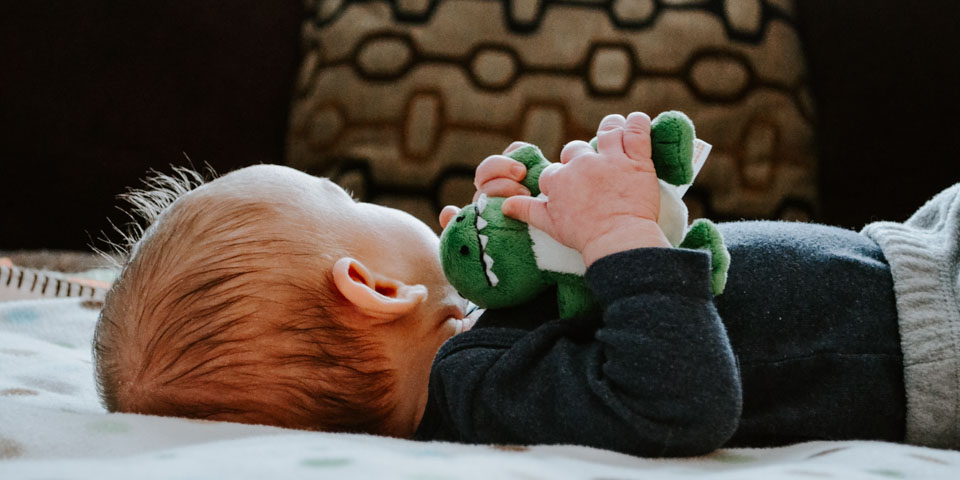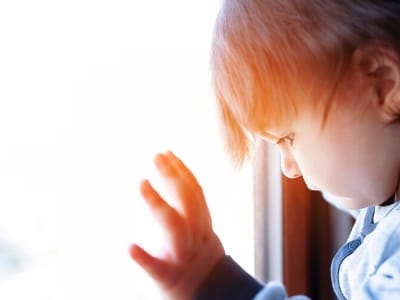Characteristics of autism in children checklist
I neonati e i bambini piccoli si sviluppano al proprio ritmo e in modi diversi. Quindi, a che punto dovreste chiedervi se lo sviluppo di vostro figlio è sulla buona strada?
Pietre miliari dello sviluppo
Dal momento in cui sono nati, i bambini intraprendono un viaggio di comportamenti e abilità chiamate pietre miliari dello sviluppo.
Queste pietre miliari sono diverse per ogni fascia d'età. Per i bambini possono includere il ribaltamento o il sorriso per la prima volta, mentre per i più piccoli possono includere il parlare o camminare.
Ogni pietra miliare dello sviluppo viene fornito con la propria gamma "media". Cioè, la gamma tipica in cui un bambino può raggiungere quella pietra miliare.
If these milestones are not met in a particular timeframe then concerns may be raised to investigate why.
While there are many reasons why a child might experience differences in their development, sometimes, the reason babies and toddlers will have developmental differences to their peers is because they are autistic.
Fatto in fretta: è più probabile che i genitori o gli assistenti siano i primi a riconoscere le differenze di sviluppo nei bambini piccoli, sebbene anche gli operatori sanitari di base e gli educatori per l'infanzia possano identificarli.

Characteristics
Because autism is related to certain behavioural characteristics, it can be difficult to recognise autism in a child until they are between 18-22 months of age. For some, characteristics of autism may not become apparent until they reach school age, or even later in life.
However, research studies have identified that there are some characteristics that parents can look for in the first years of a child’s life.
Anche se non possono essere indicativi dell'autismo, se un bambino mostra alcune di queste caratteristiche è saggio portarli a vedere un fornitore di assistenza sanitaria di base, e possibilmente un professionista della salute con esperienza nell'autismo.
I fornitori di assistenza sanitaria di base sono i medici che forniscono il primo punto di contatto all'interno del sistema sanitario. Si tratta di medici di base (MMG), infermieri (inclusi infermieri di medicina generale, infermieri di comunità e infermieri), operatori sanitari alleati e operatori sanitari aborigeni.
Se avete dubbi sullo sviluppo del vostro bambino o del vostro bambino, parlate al più presto con il vostro fornitore di assistenza sanitaria di base. Prima si riconosce una differenza o un ritardo nello sviluppo del bambino, prima si può ottenere aiuto per accedere a servizi e supporto adeguati, che possono essere d'aiuto per lo sviluppo futuro.
Fast Fact: Some of the characteristics of autism may be noticed before the age of 1, although a reliable diagnosis by a health professional with expertise in autism most often occur from when the child is 18 months or older.

Lista di controllo
Note that the information below is just a list of some of the common characteristics of autism. It is unlikely that a child will display all of these characteristics. It is important to remember, only a qualified professional can carry out an assessment for autism.
Early characteristics of autism in babies (6 months to one year) may include:
- Reacting in an unexpected way to new faces
- Preferring to make little or no eye contact
- Difficulty in following objects with their eyes
- Hearing their name does not produce a response
- Having limited or no reaction to loud sounds, or not turning their head to locate sounds
- Seeming overwhelmed by some sounds
- Displaying differences in interests for interactive games, for example not interested in games like peek-a-boo
- Chattering, or imitating sounds and words is limited
- Gestures like pointing at an object they want or waving back at others are limited
- Tendency not to imitate the actions of other people
- Dislike of being touched or cuddled, or not reaching out when about to be picked up
- Displaying repetitive body movements
Early characteristics of autism in toddlers up to 24 months may include:
- Limited or delayed speech milestones
- Predominantly walking on their toes
- Requires additional support to follow simple verbal instructions
- Gestures and imitating others’ actions are limited
- Showing an intense interest in certain objects, at the exclusion of all else
- Showing an intense interest in unusual or unexpected objects or materials
- Strong sense of ownership of objects or activities they are interested in (not wanting to share), or to engage the attention of others
- Engaging in repetitive actions and activities, such as putting objects into lines or groups
Early characteristics of autism in young children up to 36 months may include:
- Limited or delayed speech milestones
- Requires additional support to to follow simple verbal instructions
- Showing differences in interest for imaginative and social play, such as choosing not to play pretend games or play with other children in the usual way
- Wanting routines to be followed and being upset by change
- Extreme sensitivity to sight, sound, smell, taste and some other sensory experiences
- Displaying limited or no sensitivity to some sensory experiences such as heat, cold, touch, hunger, thirst or pain
- Becoming fixated on playing with particular toys, activities or actions
ASDetect: Is an app that provides videos of what some of these signs and characteristics can look and sound like and can be a useful tool for parents and health care professionals for children between 11 and 30 months.

Should you seek an assessment?
It is only natural that you might feel concerned if your baby or child is showing delays with development, or is demonstrating some of the possible characteristics of autism.
However, receiving answers sooner rather than later can be a good idea, so you can access supports and services for your child, and yourself.
On a personal level, getting a diagnosis can allow you and your family to have a better understanding of autism and how this may impact your child, including strengths they may have. If you think that your child might be on the autism spectrum, it is a personal decision to seek an autism assessment. For some parents it can be emotional identifying that your child may be on the autism spectrum, and can be daunting thinking about the process of seeking an autism assessment. Often well-meaning friends and family are quick to say things like: ‘just take a wait and see approach…things might change with age’. It is important to remember that you know your child best. If you have concerns, it is best to share these with a qualified professional to gather information to shape your decision.
Some of the benefits of seeking an autism assessment sooner rather than later, can include: • Your child (and you) may receive the help and support you might need or desire earlier
- Your child’s kindy or school, and teaching staff, may have a better understanding of your child’s strengths and needs – allowing them to support them more effectively
- Your child’s friends and family friends may have a better understanding of your child’s strengths, needs and behaviours – allowing them to interact and support them more effectively
- Your child may have a greater sense of self-identify if they understand themselves better
- Your child may have increased confidence knowing they are part of a larger group of children on the autism spectrum
Fatto veloce: l'età più comune di una diagnosi sullo spettro dell'autismo in Australia è compresa tra i tre e i cinque anni.
Ricerca di una valutazione
Come iniziare
If you are curious about your baby or young child’s development, and want to have them assessed for autism, you have a few options:
- Contact your state or territory autism association for information about autism assessments.
- Make an appointment with your GP or family health nurse. They can conduct a screening assessment for autism and if your child shows characteristics of autism they will often then refer your child for an assessment. If you do not agree with the outcome of the screening assessment you can still refer your child to health professionals with expertise in autism for an assessment.
- Parlare con un professionista sanitario qualificato con esperienza nella valutazione e diagnosi dell'autismo.
Potete imparare di più su Ottenere una diagnosi per i bambini sotto i 18 anni.
Chi sarà coinvolto nella valutazione?
Dipenderà da dove andrete per ottenere una valutazione di chi e quanti professionisti saranno coinvolti in una valutazione dell'autismo.
If you go to a private professional, the assessment will generally be completed by one professional such as a Speech Pathologist or Psychologist. In some states, or situations, you will be required to see two different types of professionals to complete an autism assessment before a diagnosis of autism can be made. It is best to check with your local autism support service provider about what is required to receive an autism diagnosis in your state or territory. However, if you seek an assessment via a government funded organisation, a range of professionals will generally be involved in any diagnosis.
I seguenti professionisti possono essere coinvolti in una valutazione dell'autismo in un team multidisciplinare secondo la National Guideline for the Assessment and Diagnosis of Autism Spectrum Disorders in Australia.
- Medico
- Infermiere professionista
- Terapista occupazionale
- Psicologo
- Assistente sociale
- Patologo della parola
- Pediatra
- Psichiatra infantile
- Neurologo
Importante: solo i professionisti che ricevono una formazione aggiuntiva per la valutazione dell'autismo sono in grado di fare una diagnosi di autismo.
Dove ottenere una valutazione
Ci sono sia servizi finanziati dal governo, sia servizi privati disponibili per le valutazioni dell'autismo. A volte, ci sarà un tempo di attesa più lungo per i servizi finanziati dal governo.
È possibile trovare un elenco dei fornitori locali di servizi di supporto per l'autismo nella nostra pagina Risorse.
Per maggiori informazioni vai a Ottenere una diagnosi di autismo per i bambini.
Get your copy of the ultimate resource: The Spectrum booklet now!
‘The Spectrum: A guide to supporting a child on the autism spectrum’ pdf is now available to purchase.
Click here to learn more and secure this essential pdf guide at a pocket-friendly price!



